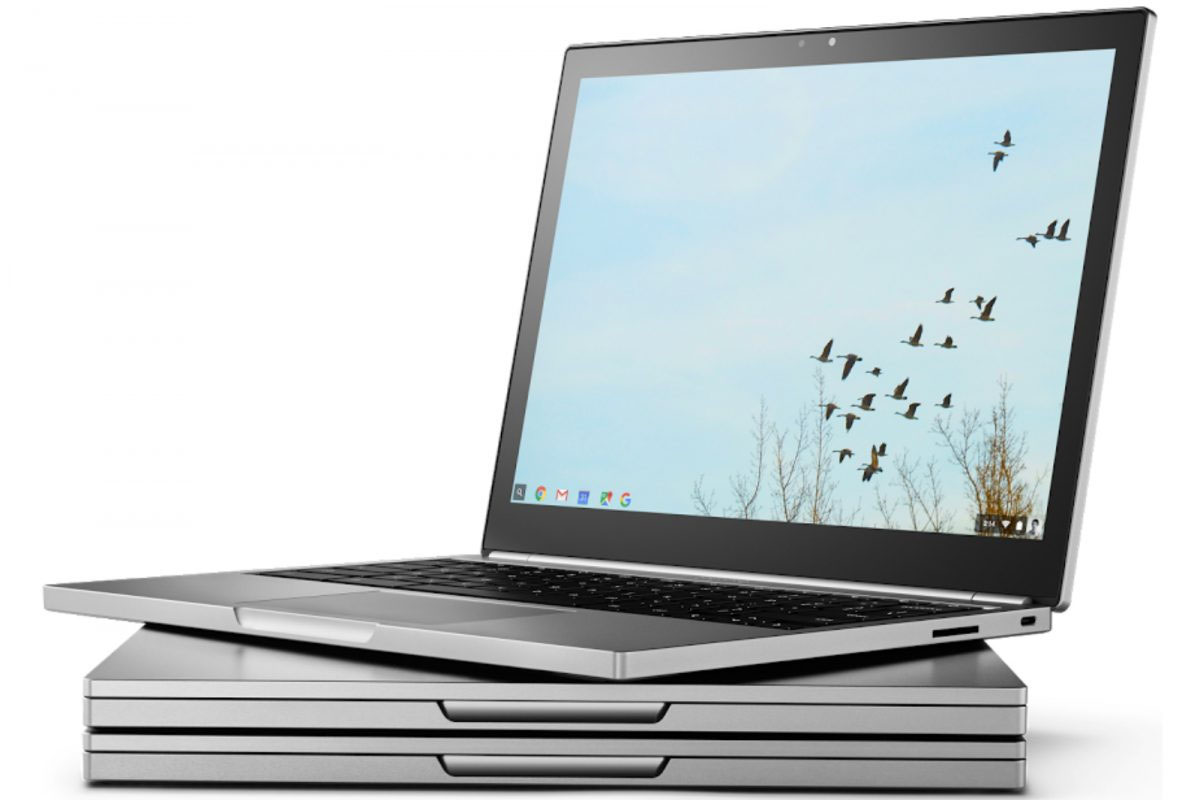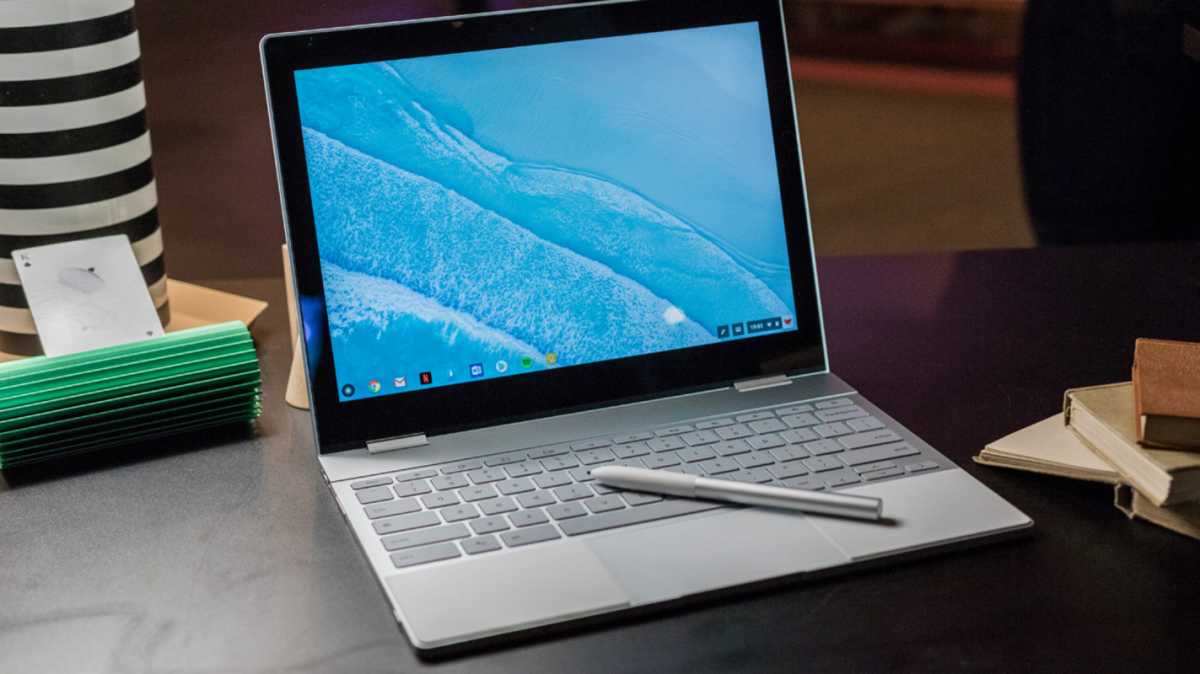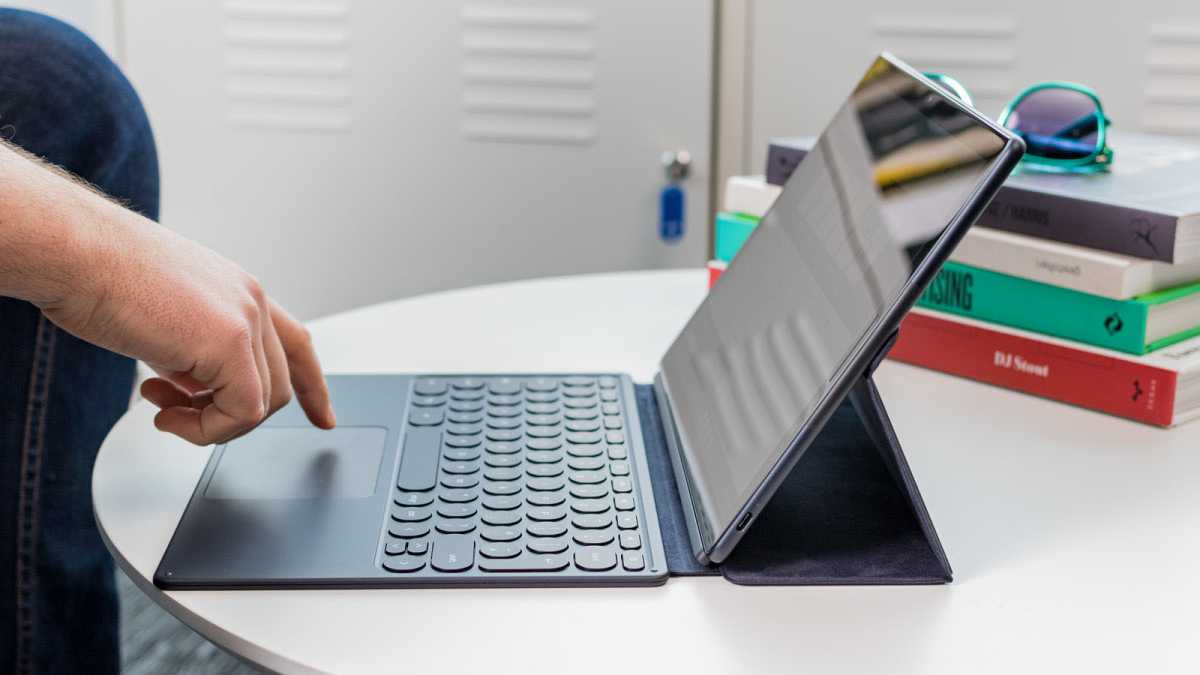
This week, the rumor mill is swirling once again around a Google-made first-party laptop, one that’ll presumably run ChromeOS. Sources say that the company is committing to a new design, possibly emboldened by a new direction that more closely marries Chrome and Android.
It’s an interesting possibility from many angles, but the one that I want to chew on is this: What could Google possibly do differently this time to make a laptop that people actually want to buy?
Before I continue, I should point out that all of this is based entirely on speculation. Here’s a story about Google pushing hard on a new laptop design, and here’s a story about a new version of ChromeOS that’s heavily based on Android. That second factor would presumably power up ChromeOS to more effectively use Android apps, making it better able to compete with devices like the iPad Pro and Surface.
So, let’s assume (and it is an assumption) that Google sees a rejuvenated ChromeOS as a good reason to dip its toes back into the laptop market. The company has an inglorious history there, which is worth looking at before we move on to considering the future.
A history of laptop letdowns
The original ChromeOS development device was the Cr-48, an interesting footnote. It was meant to be a sort of blueprint for the first generation of Chromebooks, but unlike the Nexus and Pixel phone lines, this one wasn’t sold at retailers. At the debut of ChromeOS in 2011, Google left that up to its OEM partners.
But not for long. While companies like Acer, Lenovo, and HP pounced on ChromeOS as a way to sell tons of cheap laptops to those who needed a browser and not much else, Google wanted to show that Chromebooks could compete with higher-end machines like Apple’s MacBook and Dell’s XPS. And so the Chromebook Pixel debuted in 2013, notable for Google’s first use of “Pixel” as a brand name.
The Chromebook Pixel was designed to be a flagship device, with the cheapest model coming in at $1,300. And for its specs, that was a fair price: a third-gen Intel Core i5, a high-resolution 3:2 touchscreen, and an attractive aluminum body. It was gorgeous, and I especially loved the four-color status panel that subtly hinted at Google branding. The laptop had a few ideas that we’re still pondering over, such as bucking the trend of 16:9 aspect ratios and going with 3:2. (Microsoft’s Surface Laptop series certainly took notice.)

But ChromeOS was a very different beast over 10 years ago, and most laptop users weren’t in the always-online mindset that’s ubiquitous today. Though reviewers loved the hardware, they found the price far too high for an operating system that demanded constant connection to be useful and couldn’t run standalone apps or games. Even as someone who was obsessed with Android at the time, I couldn’t justify a four-figure laptop that couldn’t run Photoshop.
The Chromebook Pixel was a curiosity that never seemed to catch the attention of the MacBook or XPS buyers that Google was gunning for. While inexpensive Chromebooks exploded in popularity as web-focused alternatives to the iPad and as thin client laptops for schools, Google failed to move its premium laptop design even after a refresh in 2015 with more powerful processors, more RAM, and USB-C. The Chromebook Pixel was quietly put out to pasture the following year, and Google executives tried to reframe the laptop as a “proof of concept” rather than a failure.
But Google wasn’t ready to give up the dream of a premium flagship Chromebook. They went back to the drawing board and released the Pixelbook in early 2018. With a convertible two-in-one form factor and a lower $1,000 starting price — not to mention some big improvements in ChromeOS — it seemed like a much more palatable take on a more premium laptop design.

Dominik Tomaszewski / Foundry
Reviewers praised the design and the compromises, but still noted that it was a very particular customer who would be attracted to a high-end laptop without Windows or macOS. While the Pixelbook was a noted improvement on the Chromebook Pixel, shoppers looking for a Chromebook still went with cheaper options, and shoppers with a $1,000+ budget for a laptop simply stuck to Windows. For the second time in a row, a Google-branded laptop was a flop.
The Slate falls flat
But the Pixelbook wasn’t a full-on failure. For that we need to look at the Pixel Slate, a full ChromeOS-powered tablet with powerful Intel hardware. It was the more capable, grown-up version of Google’s Nexus tablets that had been around for almost a decade. It really turned heads at the time for its convergent form factor that took on both the Microsoft Surface and the iPad Pro.

Foundry
But with a $600 starting price, not including the crucial keyboard upgrade, not to mention poor battery life with its svelte build and powerful guts, the Pixel Slate was crushed in initial reviews and failed to find an audience. Once again, people looking for a high-end tablet just bought an iPad, people looking for a Surface bought a Surface, and people looking for a deal avoided it entirely. The Pixel Slate went on a fire sale soon thereafter, and Google wouldn’t try its hand at a new tablet for five years — and that one would notably run Android, not ChromeOS.
There’s one last member of this family to mention, but sadly it’s a very familiar story. Google tried one last time with the Pixelbook Go in 2019, a Chromebook that seemed much more like, well, a Chromebook. This cheaper and more conventional laptop dispensed with the premium materials and the 2-in-1 form factor, trying to appeal to students and budget buyers. But with a starting price of $650, once again Google was undercut by its own Chromebook partners who sold tons of cheaper models that could do more or less the same thing for far less.

IDG
Google hasn’t tried to make a laptop or a 2-in-1 this decade, and the original hardware team has been disbanded. And after four straight high-profile disappointments — five if you count the Pixel C and its gorgeous tablet keyboard add-on — who could blame them?
A budget blueprint from Lenovo
In Google’s place, I’d focus on making ChromeOS more appealing to mainstream buyers and corporations who won’t settle for anything less than Windows. There’s plenty of ill will going Microsoft’s way that they could capitalize on. But that’s beyond the premise we’re working with here. Let’s simply take these rumors at face value and assume that Google wants to bring Chrome and Android closer together, presumably to better compete with devices like the iPad and iPad Pro (and avoid the disaster that was the Pixel Slate).
I think Google already has a blueprint for such a device: the Lenovo Chromebook Duet. Google representatives have told me that across several generations, this cheap convertible tablet (which always comes with a keyboard in the box!) is the best-selling Chromebook on the planet. They went on to say that it does especially well in the education market, and that makes sense because more and more kids are growing up with a touchscreen as their primary mode of digital interaction.

Michael Crider/Foundry
The Lenovo Chromebook Duet isn’t perfect. It’s underpowered with Arm-based hardware, and its detachable keyboard and kickstand aren’t so elegant to juggle. It’s also a much better Chromebook than it is a tablet. Even though it feels pretty close to an iPad in the hand, ChromeOS just can’t run both its own tabs/apps and Android apps at the same time with anything approaching grace.
But those drawbacks don’t really matter — or, at least, they’re minor enough to overlook for a $300-ish device that includes lots of accessories. The Duet is tiny and imminently portable, lasts a long time on a charge, and it includes everything you need in the box. The latest model is notably improved in both its screen and keyboard, and it even includes a second USB-C port for easy charging while using accessories. You can read my full review of it here.
If Google wants a self-branded Chromebook that will actually appeal to people, there it is. And that’s doubly true if future versions of ChromeOS do actually get a lot more chummy with Android, enough to run phone and tablet apps next to full-power browser tabs without any headaches. Give this theoretical neo-Chromebook some of the same understated charm as the Pixel phone line, and make sure it has access to the expanded capabilities of a Chromebook Plus (something that the Duet can’t manage with its low-power hardware).

Michael Crider/Foundry
Most of all, don’t repeat the mistakes of the Pixel Slate. Keep it small-ish, about the size of an 11-inch iPad Air at most. Keep the price low (preferably under $500) and include a stand and keyboard in the box. This might be the hardest thing for Google to achieve, who has yet to make a laptop that can truly compete on price. Maybe some close relationships with Arm-based chipmakers like MediaTek could help bridge that gap.
If you want to really wow me, resurrect that wonderful wireless charging keyboard-and-case design from the Pixel C. I have yet to see a tablet keyboard so elegant.
Will Google do it? Can Google do it? I have no idea. Probably not, to be honest. The rumors say that this new device is once again setting its sights on the over-$1,000 laptop market, something Google has failed at twice before. I’d love to be proven wrong… but in consumer tech, as in life, cynics are rarely disappointed.
Author: Michael Crider, Staff Writer, PCWorld

Michael is a 10-year veteran of technology journalism, covering everything from Apple to ZTE. On PCWorld he’s the resident keyboard nut, always using a new one for a review and building a new mechanical board or expanding his desktop “battlestation” in his off hours. Michael’s previous bylines include Android Police, Digital Trends, Wired, Lifehacker, and How-To Geek, and he’s covered events like CES and Mobile World Congress live. Michael lives in Pennsylvania where he’s always looking forward to his next kayaking trip.
Recent stories by Michael Crider:
The U.S. Justice Dept. wants to break up Google and ChromeLenovo Chromebook Duet review: Budget brillianceLenovo and Samsung have new Chromebooks you need to check out


